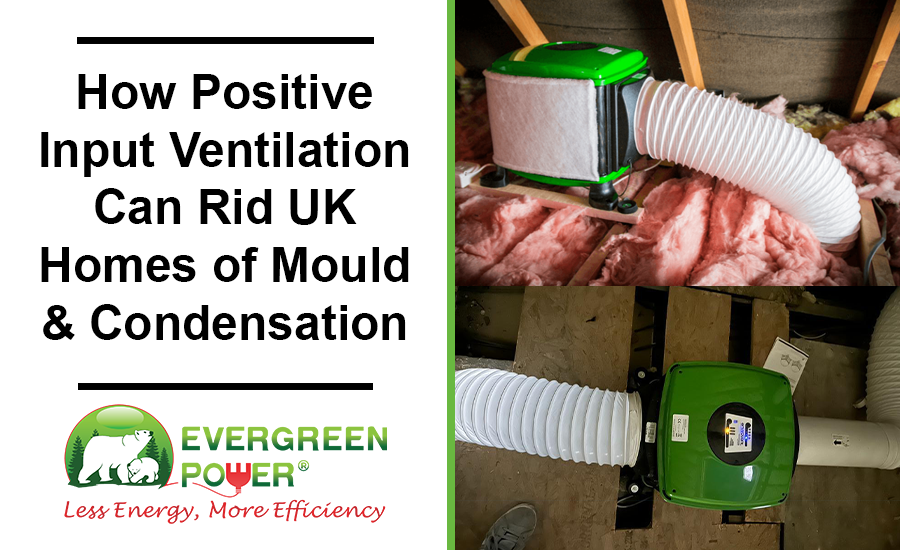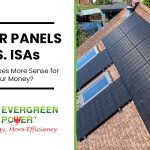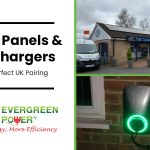
In the UK, where damp and rainy weather is a common occurrence, maintaining a healthy and comfortable indoor environment can be challenging. Mould and condensation are prevalent issues in many homes, leading to health problems and decreased energy efficiency. However, Positive Input Ventilation (PIV) systems offer a groundbreaking solution, addressing these concerns by improving indoor air quality and making homes more energy-efficient. This article explores how PIV systems work, their benefits, and their role in creating healthier, more sustainable living environments
Understanding Positive Input Ventilation (PIV)
Positive Input Ventilation is an innovative system designed to combat the root causes of mould and condensation by continuously supplying fresh, filtered air into a home. This process dilutes, displaces, and replaces damp, stale air, significantly reducing humidity levels and the conditions that allow mould to thrive.
The Science Behind PIV
PIV systems work by drawing in fresh, external air through a unit typically installed in the attic or loft space. This air is then filtered and gently pushed into the living areas of the home. The constant introduction of fresh air creates a slight positive pressure, forcing out stale air through natural ventilation points, thereby reducing moisture and improving indoor air quality.
Benefits of Positive Input Ventilation
- Eliminates Mould and Condensation: By maintaining lower humidity levels, PIV systems effectively prevent the growth of mould and reduce condensation on windows and walls.
- Improves Indoor Air Quality: PIV systems filter out pollutants and allergens, ensuring cleaner air circulates throughout the home.
- Energy Efficiency: By reducing the need for dehumidifiers and heating to combat dampness, PIV systems contribute to lower energy consumption and costs.
ms also eliminate a common source of allergens, further contributing to a healthier indoor environment.
Combatting Mould and Condensation in UK Homes
Mould and condensation pose significant health risks, including respiratory issues, allergies, and asthma. Traditional approaches, such as increased heating and chemical treatments, offer temporary fixes but fail to address the underlying problem of poor ventilation. PIV systems, on the other hand, offer a long-term solution by ensuring homes are adequately ventilated, even in the coldest and dampest conditions.
Case Studies: Success Stories Across the UK
The dual benefits of PIV systems—healthier air quality and energy efficiency—align with the UK’s goals for sustainable living. By reducing the reliance on energy-intensive appliances and creating more comfortable indoor environments, PIV systems play a crucial role in the movement towards greener, more efficient homes.
The Role of PIV in Sustainable Housing
Sustainable housing focuses on minimizing environmental impact while promoting occupants’ health and comfort. PIV systems contribute to this goal by using minimal energy to significantly improve air quality and reduce the need for chemical treatments and excessive heating.
Installation and Maintenance of PIV Systems
Installing a piv ventilation is a straightforward process that can be completed in just a few hours, with minimal disruption to the household. Maintenance is equally simple, usually involving only the occasional filter change. This ease of installation and maintenance makes PIV an accessible solution for many homeowners.
Choosing the Right PIV System
When selecting a PIV system, it’s essential to consider the size of your home and specific needs, such as allergy concerns or particularly damp areas. Professional consultation can help determine the most suitable system, ensuring optimal performance and benefits.
Addressing Common Concerns About PIV
Despite the proven benefits of PIV systems, some homeowners may have concerns about noise, energy use, or the impact on historical properties. However, modern PIV systems are designed to be ultra-quiet, energy-efficient, and suitable for a wide range of properties, including listed buildings.
The Future of Home Ventilation
s awareness of the importance of indoor air quality grows, PIV systems are set to become a standard feature in UK homes. Innovations in technology and design will likely make these systems even more effective and user-friendly, further promoting healthy, energy-efficient living spaces.
Conclusion: Breathe Easier with PIV
Positive Input Ventilation offers a powerful solution to the challenges of mould, condensation, and poor indoor air quality in UK homes. By embracing this innovative technology, homeowners can enjoy healthier living environments, lower energy bills, and the peace of mind that comes from taking proactive steps towards sustainability. As we move towards a future where healthy, energy-efficient homes are the norm, PIV systems will undoubtedly play a pivotal role.
FAQs
How does a PIV system differ from traditional ventilation?
Positive Input Ventilation (PIV) systems offer a proactive approach to home ventilation, differing significantly from traditional methods. While conventional ventilation relies on passive air flow through windows, vents, or extractor fans, PIV systems actively introduce fresh, filtered air into a home. This continuous supply of fresh air displaces stale, moist air, preventing the conditions that lead to mould growth and condensation. Unlike traditional methods, PIV systems ensure a consistent flow of air regardless of external weather conditions, making them more effective at maintaining a healthy indoor environment.
Can PIV systems be installed in any type of home?
es, PIV systems are versatile and can be installed in almost any type of home, from modern apartments to historic houses. The key consideration is the availability of a suitable location for the unit, typically in the loft for houses or a central location in apartments. For homes without a loft space, decentralized PIV units are available. Installation in listed or historic buildings is also possible, as PIV systems are non-intrusive and do not require significant alterations to the property’s structure.
Are there any running costs associated with PIV systems?
PIV systems are designed to be energy-efficient, with the running costs being surprisingly low. The exact cost will depend on the specific model and the size of your home, but typically, running a PIV system 24/7 is comparable to the cost of running a low-energy light bulb. Considering the savings on heating costs and the reduced need for dehumidifiers or other moisture control methods, PIV systems can be a cost-effective solution in the long run.
How long does it take to notice improvements after installing a PIV system?
Improvements in air quality and reductions in condensation and mould growth can often be noticed within just a few weeks of installing a PIV system. However, the exact time frame can vary depending on the severity of the issues and the specific conditions of the home. In cases of severe dampness or mould, it may take longer to fully resolve these issues as the home’s fabric needs to dry out. Consistent use of the PIV system will ensure ongoing improvements over time.
Can PIV systems help with allergies?
Yes, PIV systems can significantly help reduce allergy symptoms for many people. By continuously filtering the incoming air, PIV systems remove pollen, dust mites, and other airborne allergens from the home environment. This can lead to a noticeable improvement in indoor air quality, making it cleaner and healthier to breathe for allergy sufferers. Additionally, by preventing mould growth, PIV systems also eliminate a common source of allergens, further contributing to a healthier indoor environment.
Written by: Kyler Walter

- Kyler Walter is a passionate advocate for renewable energy and sustainable living. As a leading voice at Evergreen Power UK, he specializes in solar energy solutions and has played a vital role in promoting innovative, eco-conscious technologies across the UK.
Latest entries
 SolarMay 27, 2025Is Now the Right Time to Go Solar? What 2025 Homeowners Need to Know
SolarMay 27, 2025Is Now the Right Time to Go Solar? What 2025 Homeowners Need to Know SolarMay 20, 2025Solar Panels vs. ISAs: Which Makes More Sense for Your Money?
SolarMay 20, 2025Solar Panels vs. ISAs: Which Makes More Sense for Your Money? EV ChargersApril 2, 2025Solar Panels and EV Chargers: The Perfect UK Pairing
EV ChargersApril 2, 2025Solar Panels and EV Chargers: The Perfect UK Pairing SolarMarch 17, 2025Eco-Friendly Homes: How Solar Panels Reduce Your Carbon Footprint
SolarMarch 17, 2025Eco-Friendly Homes: How Solar Panels Reduce Your Carbon Footprint


